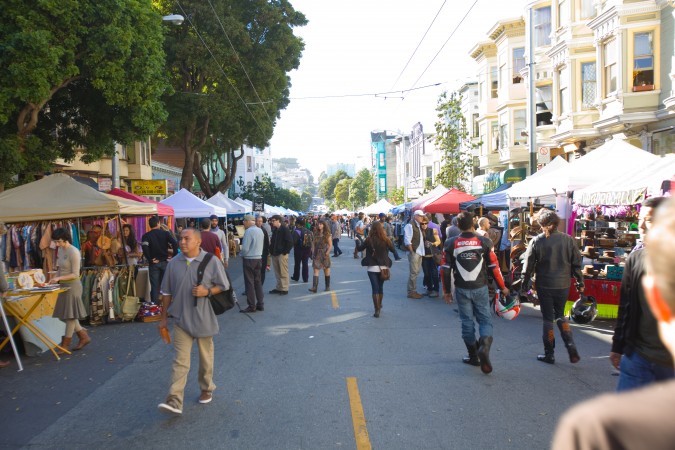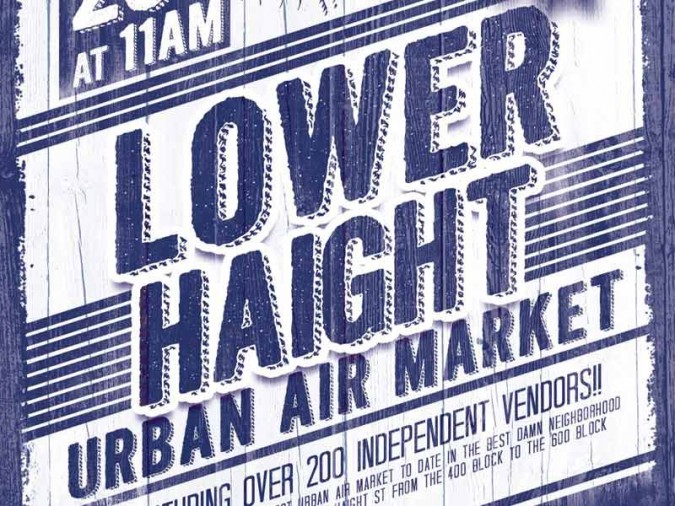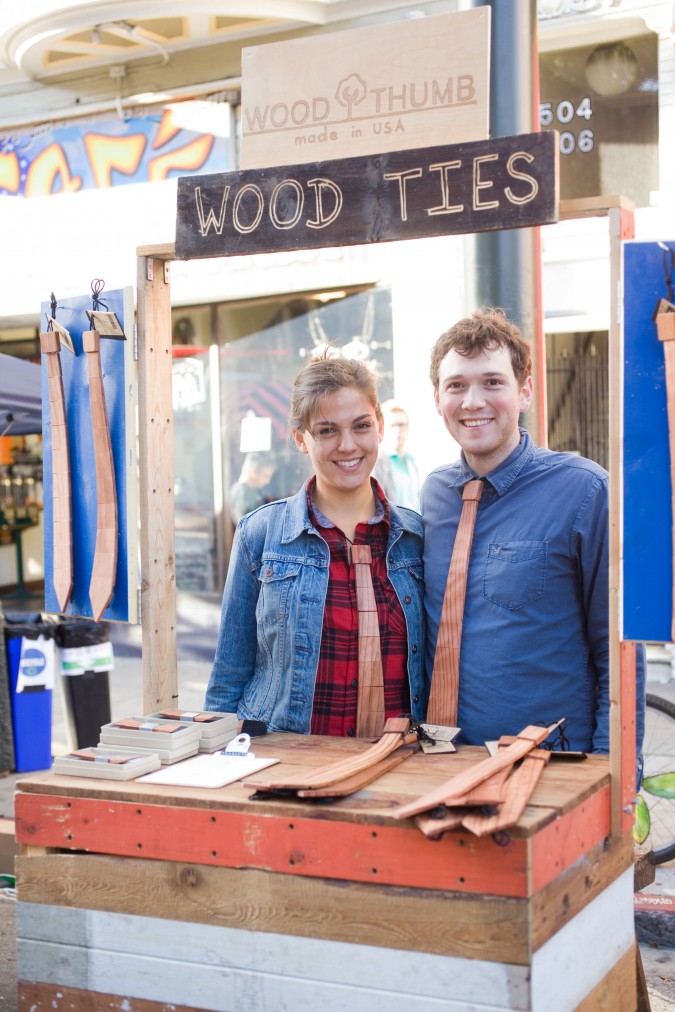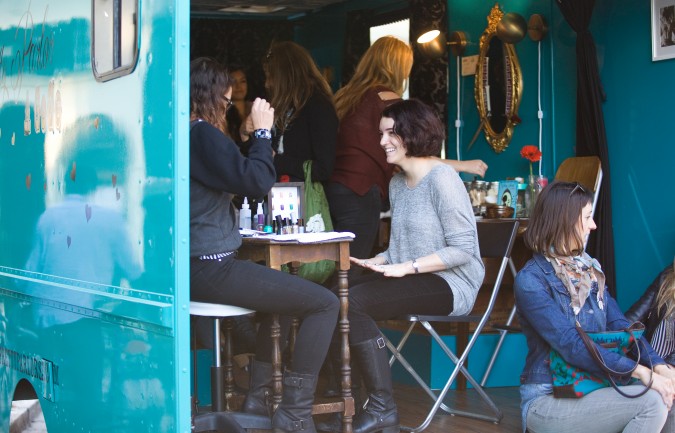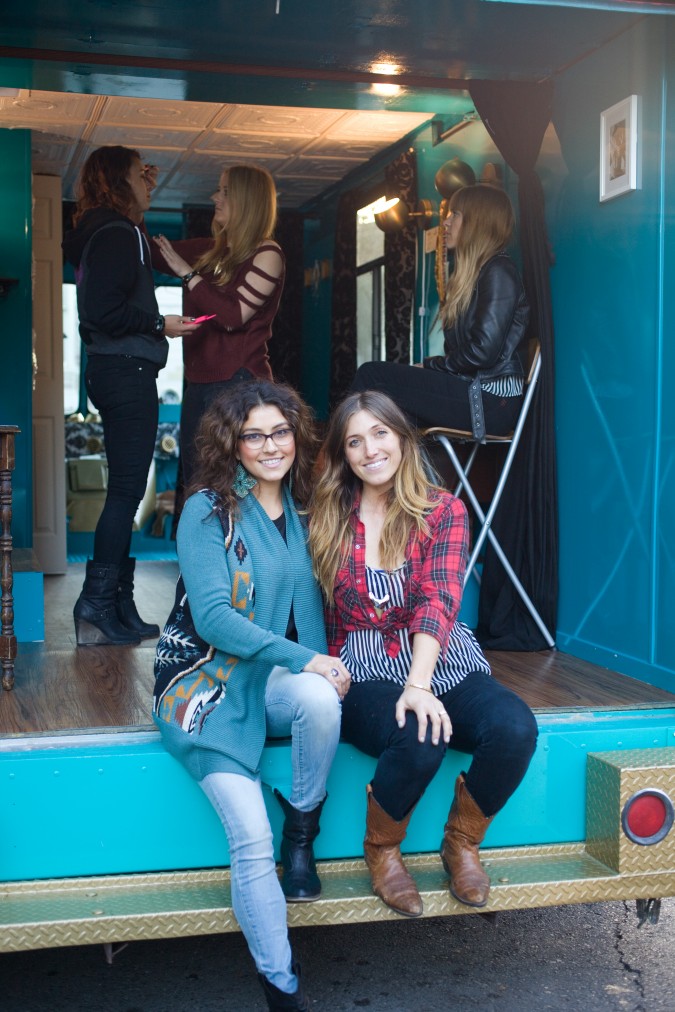Archive for the ‘Robert Moog’ tag
Interviews with 10 entrepreneurs at the Lower Haight Urban Air Market, October 20, 2012, San Francisco, California USA
On Saturday, October 20, 2012, I attended the Lower Haight Urban Air Market. The two most commercially significant blocks, from 400 to 600, of the hip lower Haight street neighborhood of San Francisco, California USA were cleared of cars and closed for this interesting small street fair.
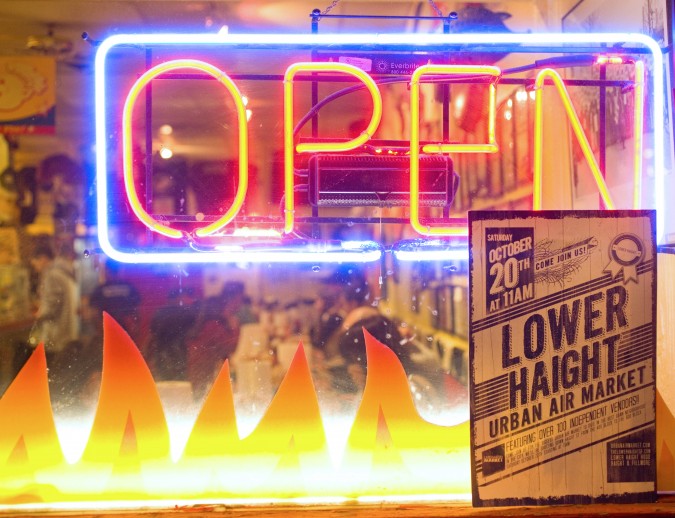
Memphis Minnies Barbeque Joint and Smokehouse, 576 Haight Street, San Francisco, California, October 20, 2012
Here’s a photograph of the poster advertising the Lower Haight Urban Air Market. The window is that of Memphis Minnies Barbeque Joint and Smokehose at 576 Haight Street. I took this picture after the sun went down but before it was completely dark. I haven’t eaten at Memphis Minnies, but I suspect it has quite a following given I see it has 1,127 reviews on Yelp today.
This project must have taken some real effort to plan and execute, because San Francisco’s Municipal Railway, MUNI, runs electric trolley buses on all of Haight Street. This street fair required that non-tethered buses be used instead for the day.
I don’t hang out in the lower Haight much, but Devon Chulick, one of the co-owners of the clothing store and art gallery D-Structure, alerted me to this fair via his store’s Facebook page. Since I’ve met some interesting people though Chulick in the past, I thought it would be smart to attend as a blogger to interview the most interesting entrepreneurs I could find, including the following ten entrepreneurs:
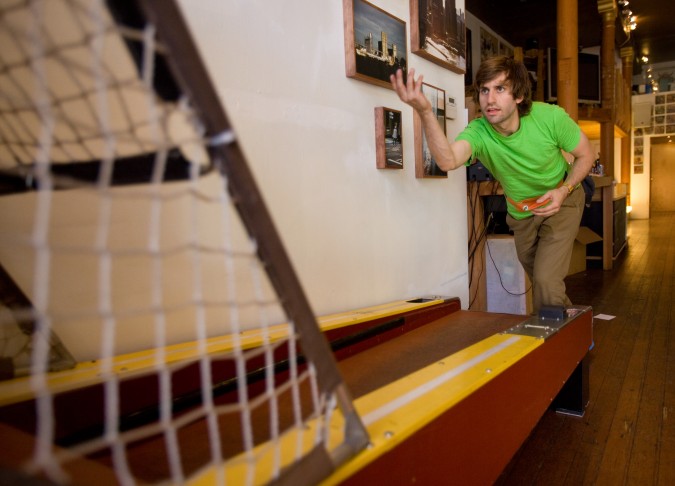
Joey Mucha playing his Skee Ball machine at D-Structure boutique on Haight Street in San Francisco California, October 20, 2012
The first entrepreneur I met was Joey Mucha. He buys used Skee Ball arcade machines, fixes them up, and places them at interesting non-arcade locations. He has a shipping container full of Skee Ball machines, and he knows how to fix them, even to the point of being able to diagnose and replace a bad computer chip on the machine’s scoring computer.
Mucha has one of his machines in Chulick’s D-Structure, and Mucha opened the machine up while I was there, so I could see how the score calculation system works. You can see Mucha playing the D-Structure Skee Ball machine in the photo above.
Amazingly, you can now play Skee Ball on your smart phone.
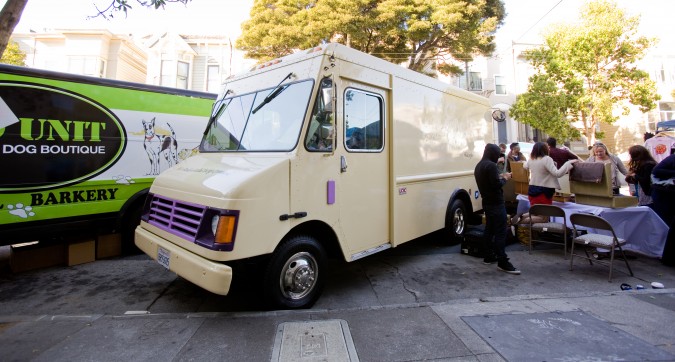
Jasy B clothing boutique inside a converted truck October 20, 2012, Haight Street, San Francisco, California USA
The second entrepreneur I met was Jasmin Baros. Baros introduced me to the concept of a clothing boutique being located in a converted delivery truck. I had never seen such a boutique, or even heard of them, until Saturday.
Baros is an accountant by profession. Her first experiment ten years ago with switching to retail didn’t pan out a after six month run.
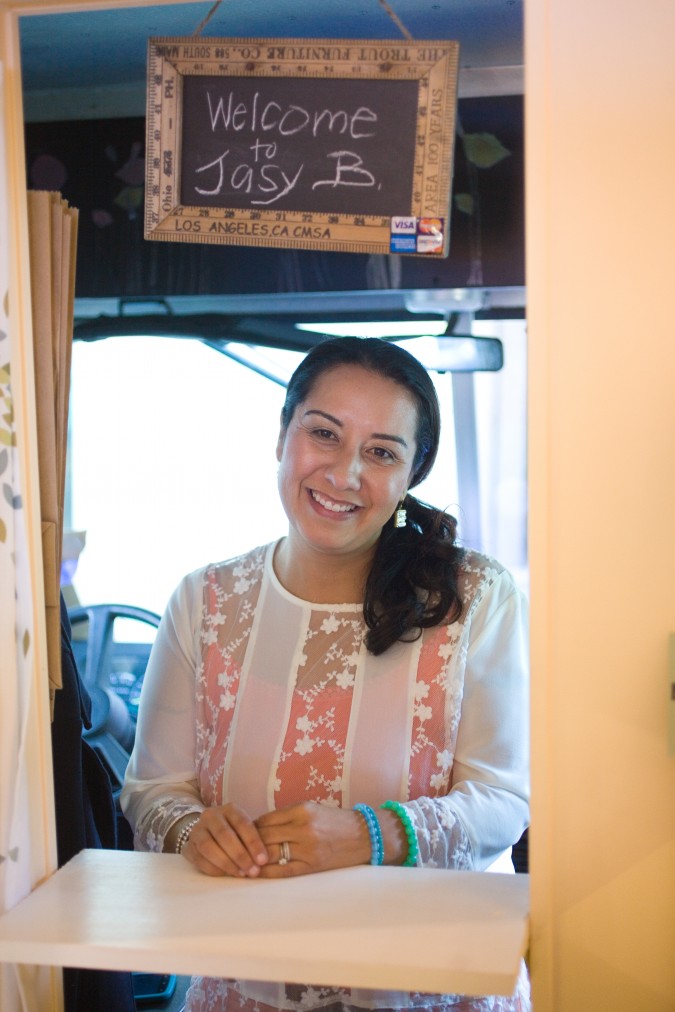
Jasmin Baros owner of http://jasybtruck.com photographed by Kevin Warnock, October 20, 2012, Haight Street Urban Air Market, San Francisco California USA
Her refurbished truck, just six weeks new, is her second attempt at retail, and I think her chances are better than 50/50 for a success. She bought the truck already freshly painted from a photographer for just USD $6,000, and only had to spend $2,000 having her logo painted on the side. It would have likely cost her $6,000 just for the fresh paint if she didn’t find an already freshly painted used truck.
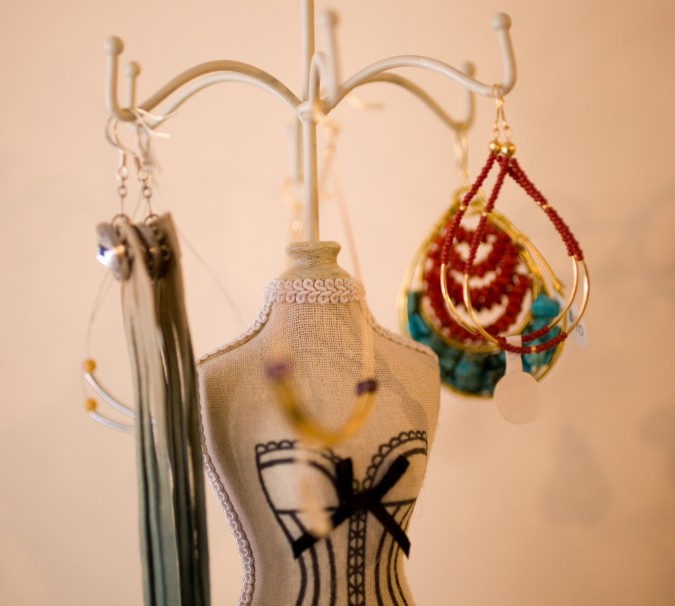
Jewelry for sale on Jasy B clothing boutique truck at Lower Haight Urban Air Market, October 20, 2012, San Francisco, California USA
Baros’ total cost to get into business she told me came to $25,000 — likely a fraction what it would cost to open a traditional retail boutique in leased store front space.
The truck — officially named the Jasy B Truck — is cute and inviting. The ceiling is pressed tin like you’d see in a vintage building. There is wainscoting on the walls. There is directional spot lighting. The colors are right. There’s a dedicated staircase with rails at the rear, where the door rolls up like a garage door. When the truck is parked at a 45% angle relative to the sidewalk, customers can just climb on board, in a way that feels natural and welcoming.
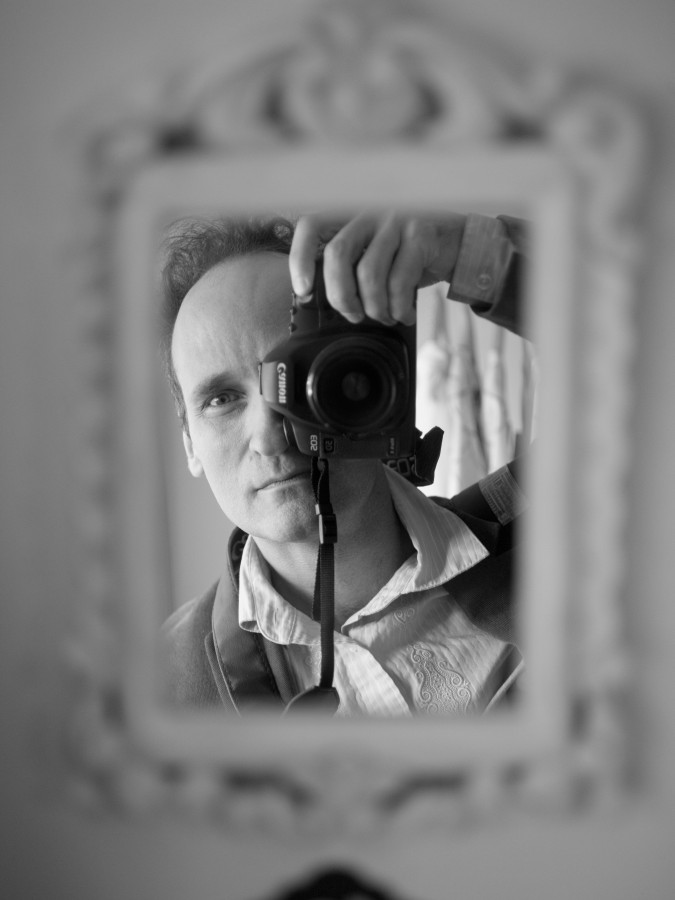
Kevin Warnock self portrait inside Jasy B truck clothing boutique, October 20, 2012, Lower Haight Urban Air Market, San Francisco, California USA
The Jasy B boutique on wheels had a wall mirror next to its jewelry display. I caught a glimpse of myself in this mirror, and since the mirror was small, it neatly framed my head. I snapped a picture with my Canon 5D Mark II digital camera I used to take all the photographs that illustrate this post. Note that I uploaded the pictures at full camera resolution. Click on them twice in delayed succession to see the full size versions, which are 21 megapixels.
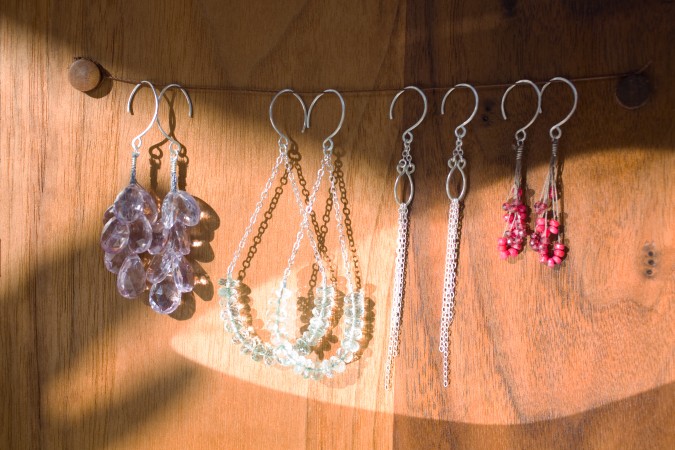
Sandra Kathleen Jewelry for sale at Lower Haight Urban Air Market, October 20, 2012, San Francisco, California USA
The third entrepreneur I met was Sandra Bowling, owner of Sandra Kathleen Jewelry. Bowling makes the jewelry. I asked permission to take the above photograph. Bowling gave permission and thanked me for asking permission. She said one woman particularly irritated her by taking pictures without asking, and when confronted, the photographer said she was going to send the pictures to a friend or relative (I can’t recall which) that also made jewelry for profit — to copy and then sell! I presume these designs are not patented, but still, I can see it being annoying having people taking pictures with the express intent of taking your work to profit from it.
Bowling had her jewelry nicely displayed, and I loved the light as shown in my picture above. The brighter spot of light in the lower right was from light bouncing off the hand mirror she had on the table.
Sadly, I forgot to photograph Sandra Bowling.
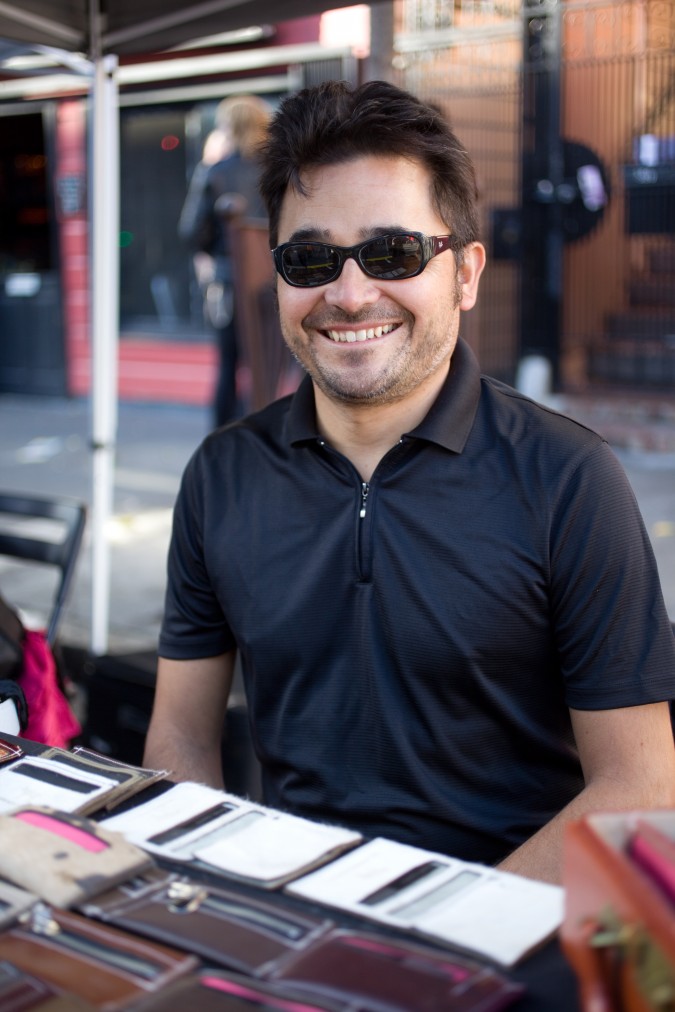
Angel Cantu founder of Halo Bender Design, a maker of upcycled leather wallets made from furniture leather samples, October 20, 2012, Lower Haight Urban Air Market, San Francisco, California USA
The fourth entrepreneur I met was Angel Cantu, above, founder of Halo Bender Design.
Halo Bender Design makes wallets for men from the leather swatches furniture stores have on hand to help buyers decide what leather to buy for custom ordered chairs and sofas. Cantu discovered that stores replace their swatch books from time to time, and when they do, they discard the old books. Cantu has learned that he can rescue the leather from landfill by giving the proprietor a few wallets he made from earlier swatch books. Since his materials cost is so low — thread and his time, this is a great exchange. The swatches he showed me looked brand new, and the wallets looked fresh and brand new as well, with no hint that their leather was perhaps already years old.

Wallets made by Halo Bender Design from furniture leather samples October 20, 2012, at Lower Haight Urban Air Market, San Francisco, California USA
Cantu cut the first wallets by hand with scissors. Then, he joined TechShop, a well equipped workshop that rents access to tools like a health club rents access to exercise machines. TechShop has a laser cutter to replace scissors, and industrial sewing machines capable of stitching leather. TechShop has spawned many small businesses, including DoDo Case, which makes an Apple iPad case that looks like a leather hard cover book. Current United States President Barack Obama carries his iPad in a DoDo Case brand case.
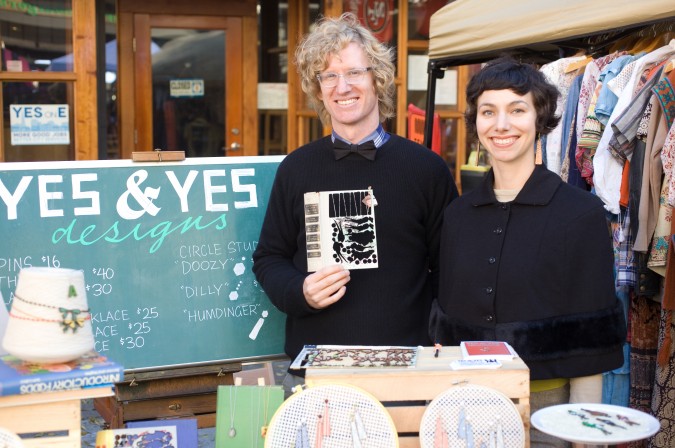
Laura Bruland the founder of Yes and Yes Designs with her boyfriend Julien Shields that works with her in the business, October 20, 2012, San Francisco, California USA
The fifth entrepreneur I met was Laura Bruland, founder of Yes & Yes Designs.
Yes & Yes is another TechShop success story, and she’s featured on their website.
Yes & Yes makes jewelry from old hard cover book covers. Bruland uses TechShop’s laser cutter to slice through the canvas and cardboard book covers in a way that would be nearly impossible with a jig saw or a Xacto knife.
In the picture above of Bruland with her boyfriend Julien Shields you can see Shields holding a book cover that has had over two dozen pieces of jewelry cut from it. The row of trapezoids on top became earrings, in the style you see Bruland wearing in the same picture.

Pins made from the covers of old books by Yes and Yes Designs, over rice, October 20, 2012, San Francisco, California USA
Many of Bruland’s designs feature the silhouettes of stylish women — Bruland confided that the designs themselves are vintage, derived from old dress making patterns. The pins above are examples of these designs. Look at how typography plays a part of her designs.
Like the upcycled wallets made by Angel Cantu, Bruland’s cost of materials is extremely low. She laser cuts out of date and falling apart books of nominal value as books. I suspect she pays little or nothing for most of the books.
I saw customers buying Bruland’s products, and saying nice things about them while doing so, something I didn’t happen to catch with any of the other artists at Saturday’s fair.
The sixth entrepreneur I met was Chris Steinrueck, co-founder of Wood Thumb, a maker of men’s ties and bow ties, among other products.
Wood Thumb recycles redwood it receives for free from Recology, the company that picks up the trash from homes and businesses in San Francisco. Recology sifts through the trash it picks up and hands the redwood planks it finds to Wood Thumb, which then planes and mills the ties into shape. The ties are cut on a ShopBot CNC router.
I love the upcycling and recycling demonstrated at this fair.
Wood Thumb started out at and still does some work at TechShop, like Yes & Yes Designs and Halo Bender Design, also profiled in this post.
The ties are made from redwood because redwood is attractive and particularly because it is light in weight. Chris, who runs the company with his co-founder brother David Steinrueck, said people can feel the difference in weight between redwood and other attractive wood, and prefer the light weight redwood. Conveniently, Wood Thumb ties are rot resistant, in case you forget your tie in the woods, unlike silk or wool ties.
Wood Thumb appears to be doing well, selling thousands of ties per month as of the end of 2011.
I photographed Chris with his girlfriend Rebecca Carrillo at their booth, also made from reclaimed wood.
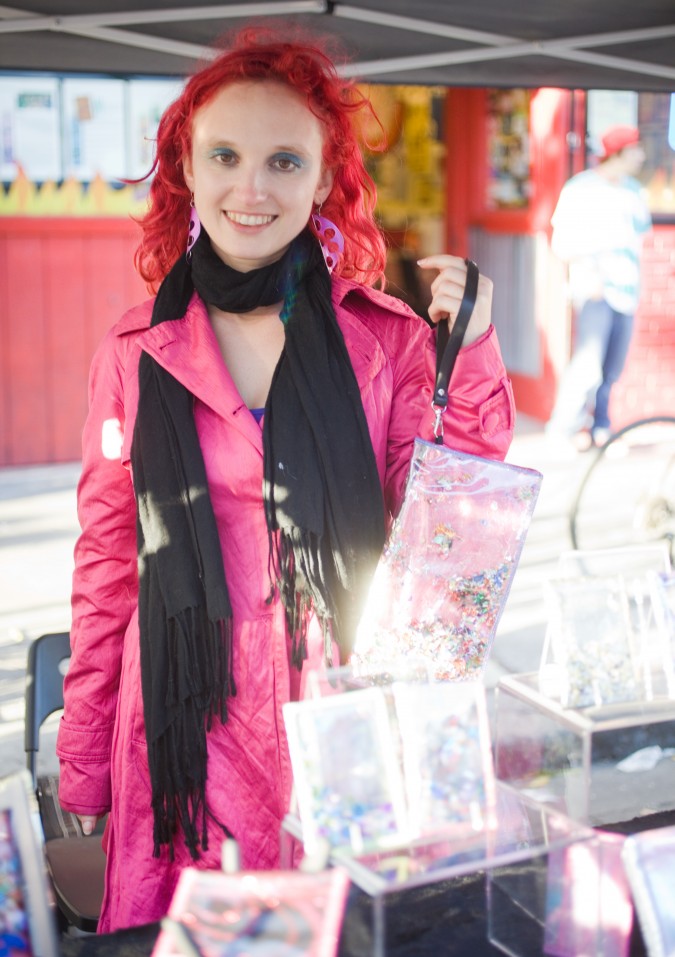
Sarah Boll owner of Glitter Disaster at Lower Haight Urban Air Market, October 20, 2012. Photograph by Kevin Warnock.
The seventh entrepreneur I met was Sarah Boll, who was the most interestingly dressed, with exceptionally red hair, vivid glittery blue eye shadow, a magenta jacket and wild black and white stretch pants she personally sewed. It was a look that is completely consistent with her product — glittery purses, clutches and related accessories. This was Boll’s first time selling at a street fair.
Her company name is Glitter Disaster — a name I really like.
The glitter you see in the clear vinyl is sandwiched between two layers, where it’s free to slide around like snow in a snow globe. The glitter never touches what you put into her clutches and purses. The random and ever changing glitter display catches your eye, and I think these products were the most inspired and unusual of everything I saw on Saturday.
Boll has an online store on Etsy, as well as a Facebook page and a Tumblr account.
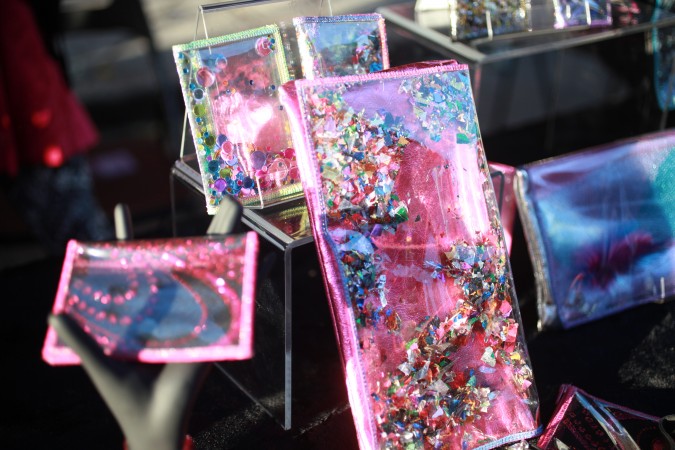
Glamorous accessories for sparkle connoisseurs by Glitter Disaster, October 20, 2012, Lower Haight Urban Air Market, San Francisco, California USA
The vinyl sheets are sewn not with a sewing machine but with a serger, called overlock machines outside of North America for the overlock stitches they create. If you look inside some of your clothes, you will see overlock seams. A serger is a fascinating machine. The overlock seam is not one thread but multiple threads, from separate spools. This means each thread can be a different color, a feature you can see Boll used to create interest with her pieces, since she uses the overlock seams as a visible design element.
I learned about the serger several weeks ago when I was looking into what I would need to sew my own clothes. I took sewing class at Lab School, and I made quilts when I was 12 years old. I want to make some really crazy outfits I can’t find in stores. That’s when I learned I would need a sewing machine and a serger machine. I have since decided to just wait until my next trip to Shanghai and have my clothes made in the world famous Bund fabric market, which will be more productive and more fascinating, because that stupendous fabric market has so many more fabrics than you can buy in the San Francisco Bay Area.
The eighth and ninth entrepreneurs I met were Misty Briglia and Sarah LaShelle, co-founders of Pretty Parlor beauty boutique on wheels. The Pretty Parlor is also built inside a retired delivery truck, like the Jasy B Truck. The beauty business is tightly regulated, unlike the retail clothing business. Thus, the Pretty Parlor truck has a bathroom complete with running water in a charming old world porcelain sink. There’s is room for a wheelchair to move around on board. A wheelchair ramp to board is in the works. I wonder if they can find a suitable aluminum ramp at a salvage yard that dismantles U-Haul trucks — those ramps are really well made.
In the photograph above, the woman in the gray sweater seated had just have her fingernails painted with intricate designs — a different design on each finger. I introduced myself to her and she let me see the results, which she really liked. She gave me permission to include her on this blog. The manicurist Mia Rubie, on the left, had her manicurist license out for display, just like you would see in a fixed location shop. I loved the antique furniture throughout the truck.
In the photograph above the founders Briglia and LaShelleare are sitting on the rear step of the truck. In the background, from let to right, are:
- Marie Rubie — Nail Artist
- Marla Kay — Esthetician
- Katie Stosic — Stylist and Receptionist
All of the trucks had generators chained outside sitting on the pavement. But I saw no heavy electrical requirement in any of the trucks. Since the trucks are only parked for the day, I think they all could switch to LED lighting and power themselves from a dedicated ‘house’ battery bank like those in recreational vehicles and bus conversions that charges from the vehicle alternator while driving. The generators are noisy and unnecessary. From what I could tell, none of the trucks contemplate air conditioning the sales floor while parked, but that’s the only reason for a large generator like the ones I saw.

Products for sale at Pretty Parlor beauty boutique on wheels, October 20, 2012, San Francisco, California USA
I recommend adding a solar panel to the roof to keep the batteries charged while the vehicles are in storage, and also to be able to boast that the stores are in part ‘powered by the sun.’ Solar panels are very affordable these days.
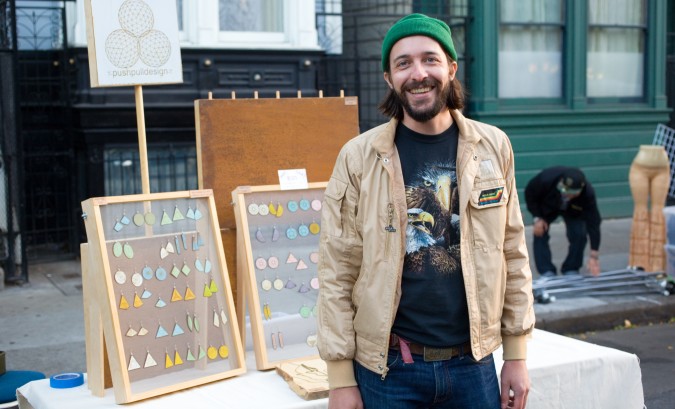
Aaron Bray, owner of PushPullArtDesign.com, October 20, 2012, Lower Haight Urban Air Market, San Francisco, California USA
The tenth and last entrepreneur I met was Aaron Bray, owner of Push Pull Art Design. Bray was at the fair selling his brand new but vintage appearing earrings and pendants.
He cuts the designs from steel with tin snips, and then flattens the cut edges with weights. He then treats the metal to give it a rich aged patina, rust I believe, that makes it resemble copper. I don’t know how Bray paints the pieces, and I could find no description on his website about how they are made. In fact, I could find almost no information about Bray online, and in particular, I could not find any pictures of him. I had Bray’s full cooperation to take the picture you see of him here.
I love Bray’s work, but I don’t understand why he is keeping such a low, low profile online. He should examine how Sarah Boll is using the Internet to promote her art. Bray’s online store is one example of how his low profile is hurting his finances. He sells only his discontinued work on his online store, but there are no ‘buy now’ or ‘add to cart’ buttons to be found. The price is a hyperlink, and if you click that you are taken to PayPal where you can buy that item. But that’s is expecting far too much from people to start clicking links looking for a way to buy. There needs to be a buy button on every item for sale, without exception.

Pendants by http://pushpullartdesign.com, October 20, 2012, Lower Haight Urban Air Market, San Francisco, California USA
The site is so sparse that it’s off putting. I can’t read Bray’s biography or see what he looks like. I can’t learn his phone number. I can’t determine what city, state or country he lives in, except by inferring based on the shows he notes he will attend. Even then, the list is heavy on abbreviations like SF for San Francisco, California. Buyers from other parts of the world may not know what SF means. I can’t learn what stores carry his products. I can’t see his products worn by people. I can’t even learn what the products are made from or how big they are, as there is no reliable size reference in any of the pictures.
Bray has the most subtle, artistic and lovely product of any that I have reviewed here, and I offer the above criticism in the hope that he will make simple changes that I predict will measurably increase his revenues and profits. Here’s one final piece of advice: Add your products to your Etsy store, which currently has zero products for sale. From what I have heard, Etsy really works.
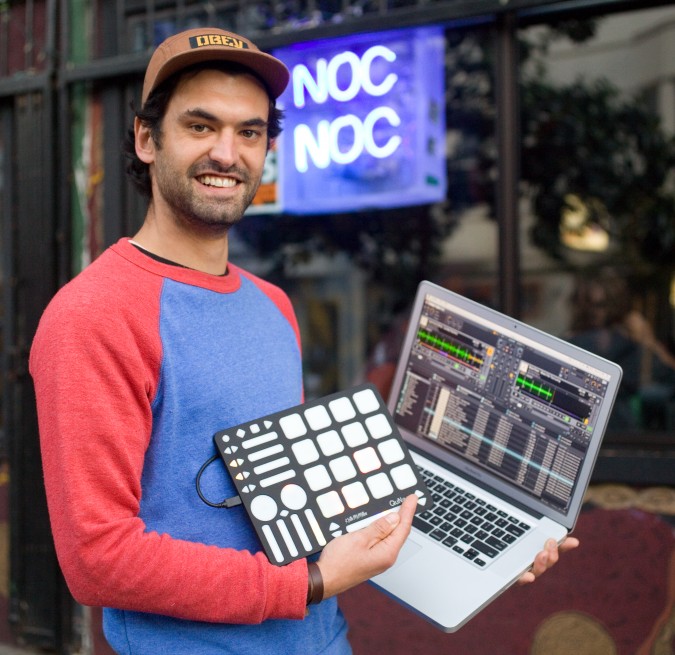
Matt Hettich is the Product Specialist / Artist Relations person at Keith McMillen Instruments, October 20, 2012. Photographed outside Noc Noc bar at 557 Haight Street, San Francisco, California USA.
The last person I met was Matt Hettich. He’s not technically an entrepreneur because he is not a founder of the company whose product he was pitching. But his product is interesting, and his approach to promoting it is also interesting, so I have included him in this post.
Hettich’s title is Product Specialist/Artist Relations. The company he works for is Keith McMillen Instruments. This company didn’t have a booth at the fair. I met Hettich as the fair was winding down, when I walked into the legendary bar Noc Noc that’s been in the same spot on lower Haight Street for decades. The decor hasn’t changed in decades — still the crazy handmade furniture and bar, which is holding up quite well considering the flow of hard living hipsters over the decades.
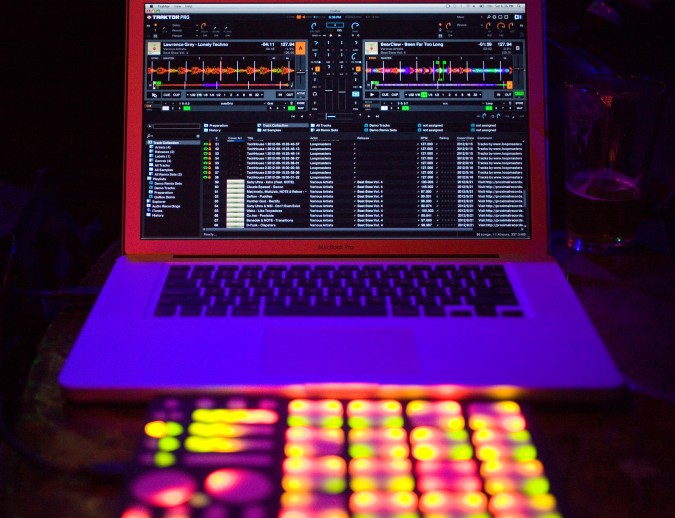
QuNeo 3D Pad Controller by Keith McMillen Instruments at Noc Noc bar on Haight Street, San Francisco, October 20, 2012
I met Hettich almost immediately because he was showing off the eye catching and colorful QuNeo 3D Pad Controller seen in the pictures above and below. This is MIDI controller for digital musicians and disc jockeys. The buttons on this controller are not labeled because they are mappable by software to whatever you want them to control. The buttons sense where you touch them and how hard you press, which for sounds like drum machines can be very valuable and can help musicians be more expressive.
I am not a musician, but Hettich did a great job explaining the device and why I would want one if I were a musician.
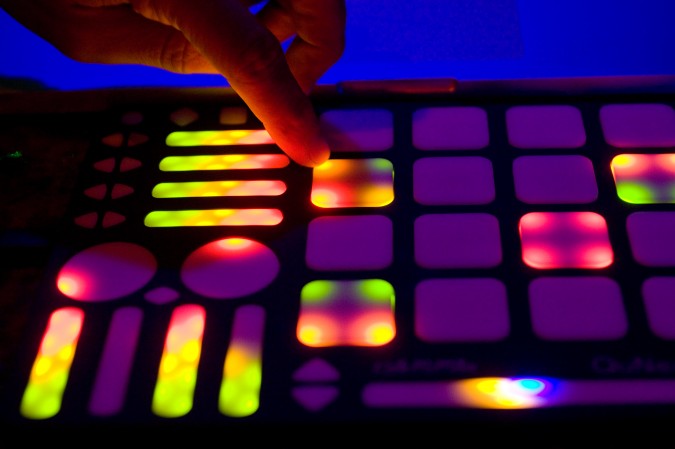
QuNeo 3D Pad Controller by Keith McMillen Instruments in use, October 20 2012, Noc Noc bar, San Francisco, California USA
Company founder Keith McMillen is a legend in the instrument business. One of the company’s customers was sitting with Hettich, and the customer compared McMillen to Robert Moog and Tom Oberheim, and said McMillen is in the same league. This stature probably explains why when his company ran a Kickstarter campaign to raise USD $15,000 he raised over ten times that amount.
The QuNeo costs just USD $249 — less than I guessed.
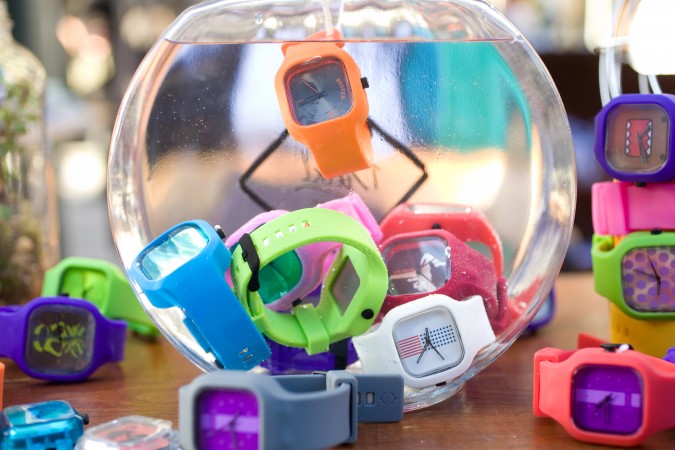
Modify Watches brand watches for sale at D-Structure at Lower Haight Urban Air Market, October 20, 2012, San Francisco, California USA
Here’s a pretty picture of some colorful silicone rubber wrist watches from Modify Watches, a brand of Modify Industries, Inc. I took this picture outside of D-Structure, where Chulick had a table of wares for sale. D-Structure carries Modify Watches at their store and online.
My friend Aaron Schwartz founded and runs Modify, and I’ve written about his products on this blog before. Schwartz has allowed me to borrow some of his products to photograph being worn by some of the models I photograph.
Schwartz’s company is a on a roll — his products were featured on the very popular United States television show The Today Show on October 3, 2012.
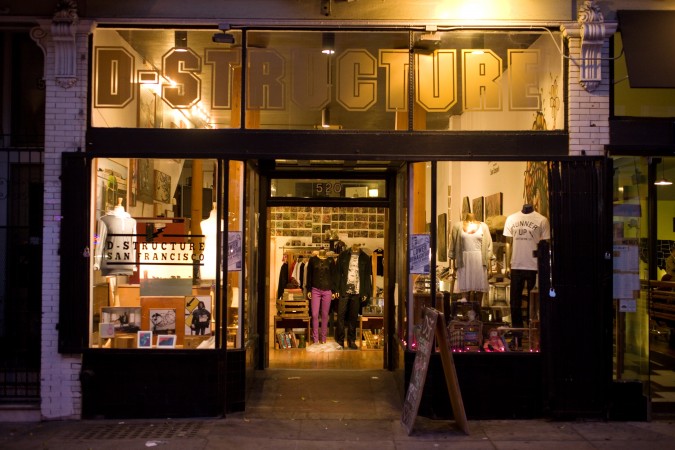
Magic Hour photograph of D Structure clothing boutique and art gallery, 520 Haight Street, San Francisco, California, October 20, 2012
After the fair ended, I took this picture of Devon Chulick’s D-Structure art gallery and boutique, just as the sun was going down. I thought the ‘magic hour’ light was flattering.
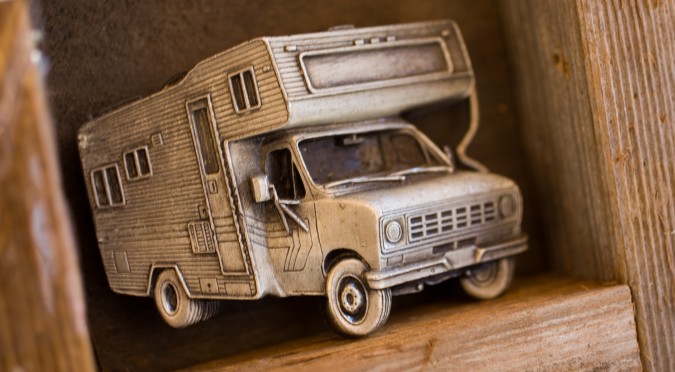
Class C motorhome belt buckle for sale by Staghound Belts at Lower Haight Urban Air Market, October 20, 2012
Finally, Staghound Belts had a booth where they sold new belts for men. They also had a collection of vintage belt buckles, including this buckle showing a Class C motorhome on a Ford van chassis. This made me think of George Lehrer, a blogger I’ve read for years. Lehrer for a decade now has lived full time in his Class-C motorhome he has named Ms. Tioga, after the brand name given by its manufacturer. He writes several times a day, and makes about USD $1,000 a month in revenue from Google Ad Words, which supplements his US Social Security retirement checks. I suspect Lehrer would like to have this buckle, and I further suspect that Staghound Belts will have it for sale for some time, as I doubt there is much demand for such a unique item.
It’s likely that Staghound made the belts they were selling, and I should have asked more questions so that I could have written about the founder as an entrepreneur. Next time I will.
[November 27, 2012 — I updated this post to name Julien Shields. The original version of this post referred to him as Laura Bruland’s boyfriend.]
